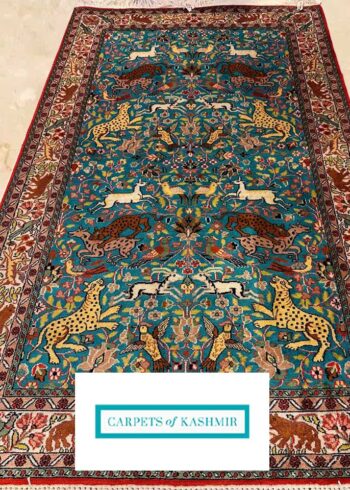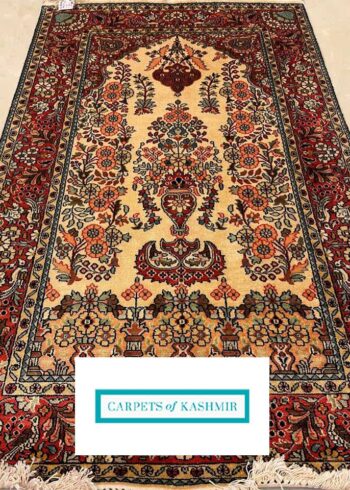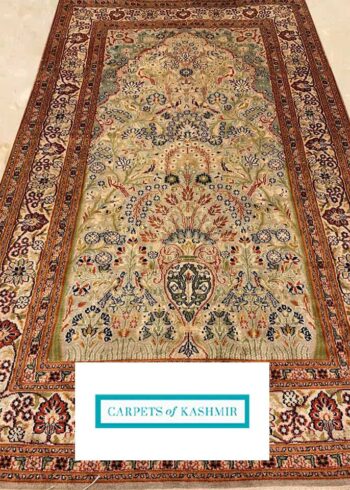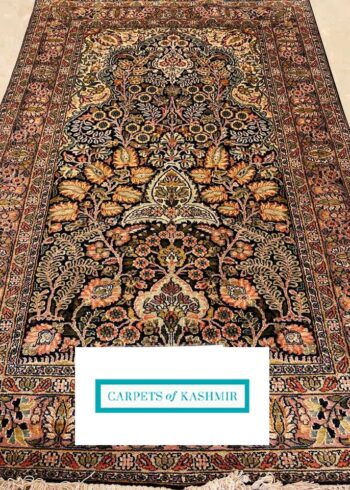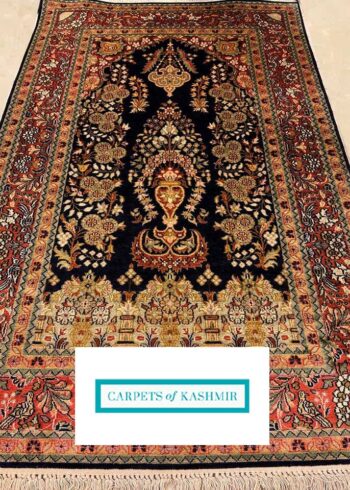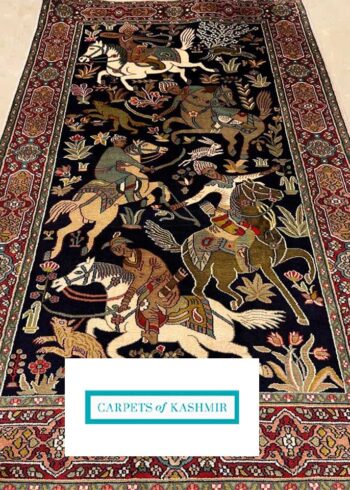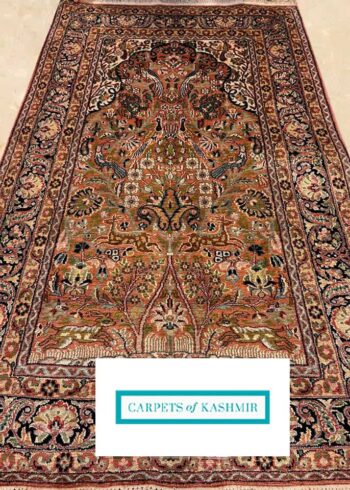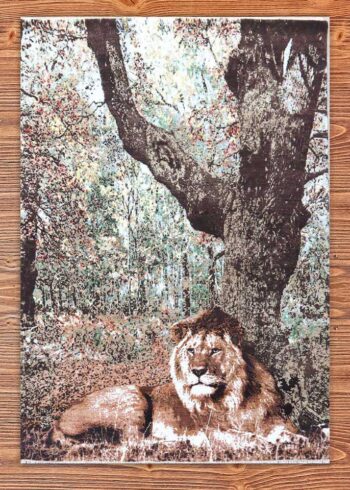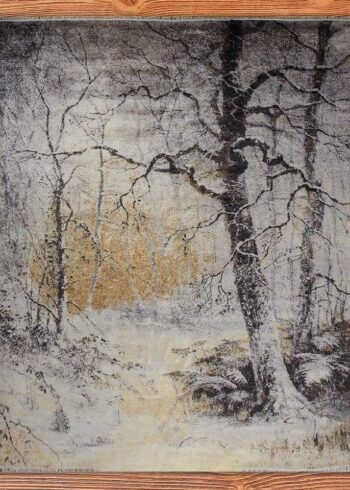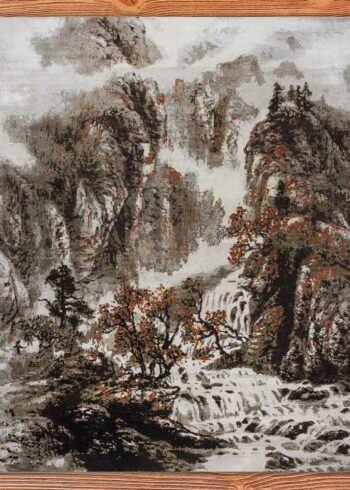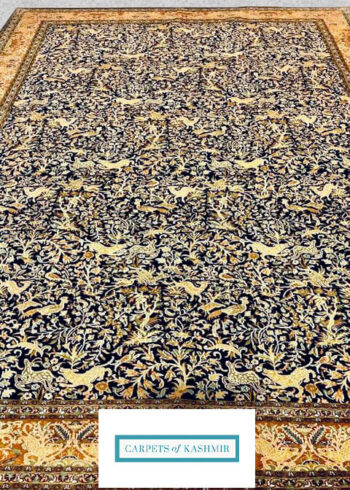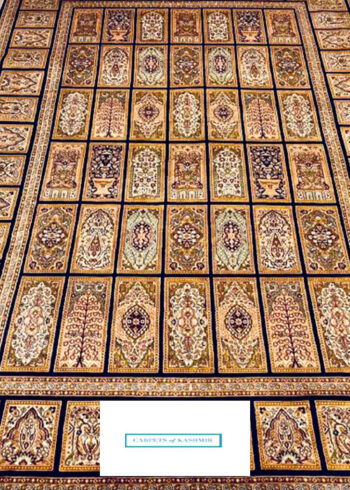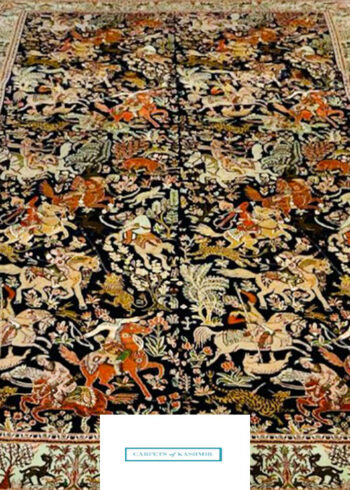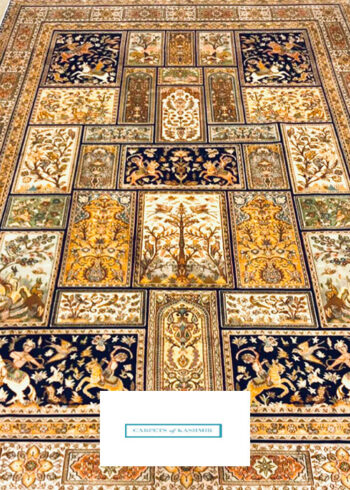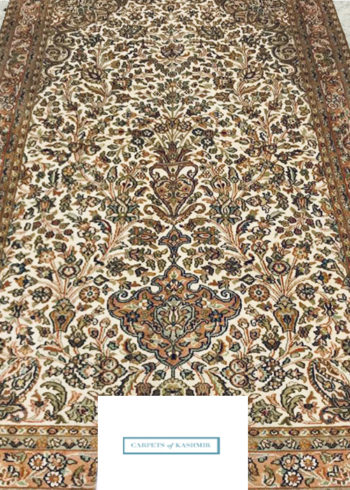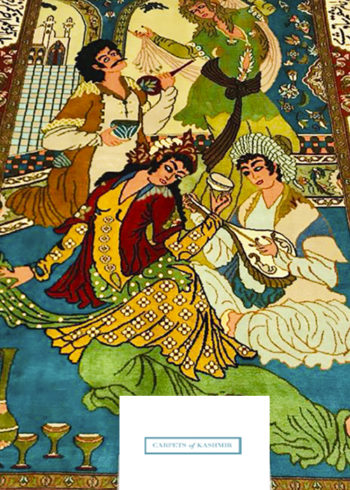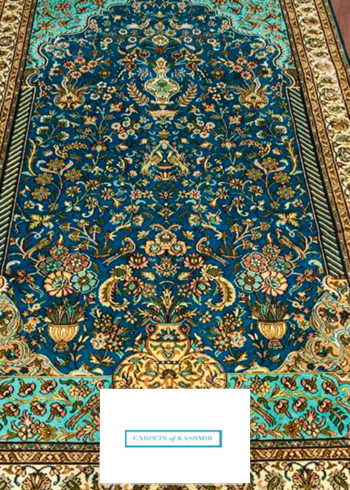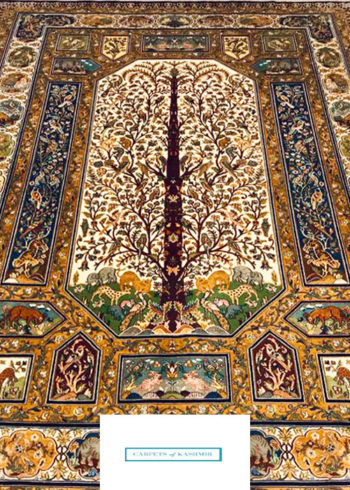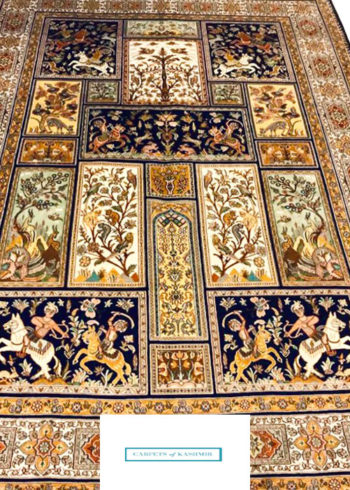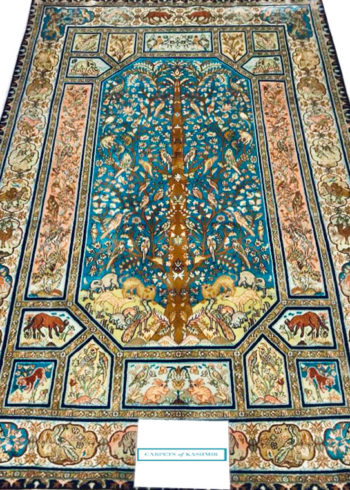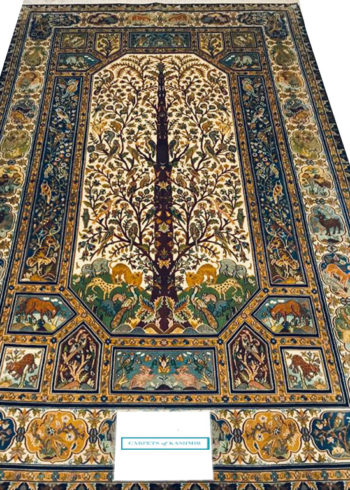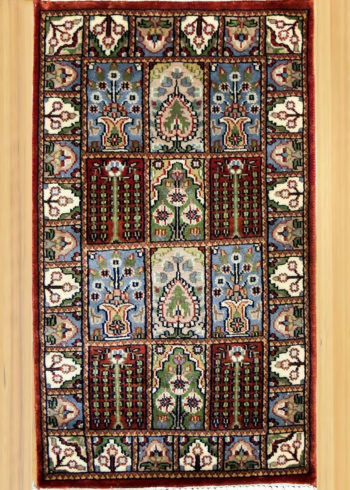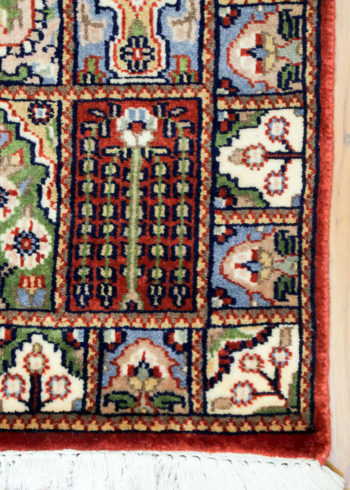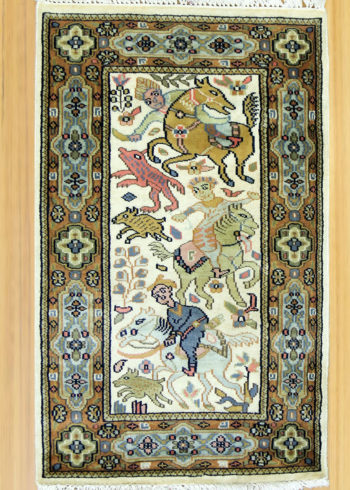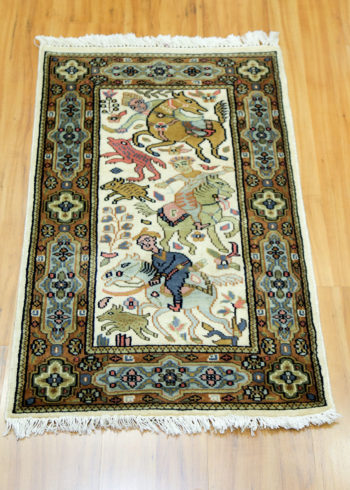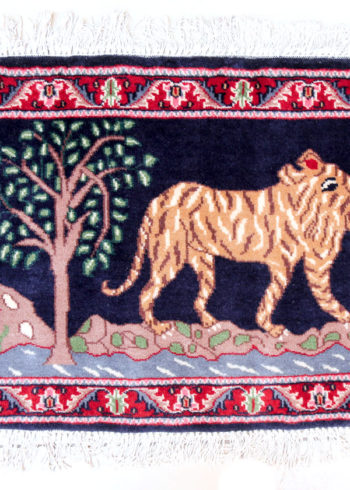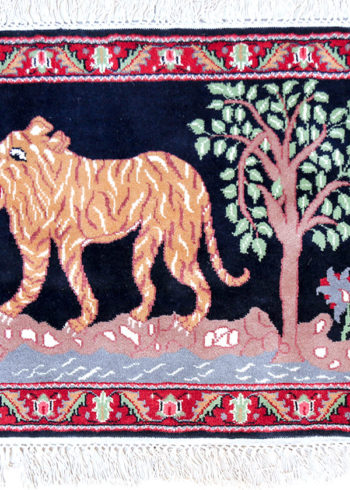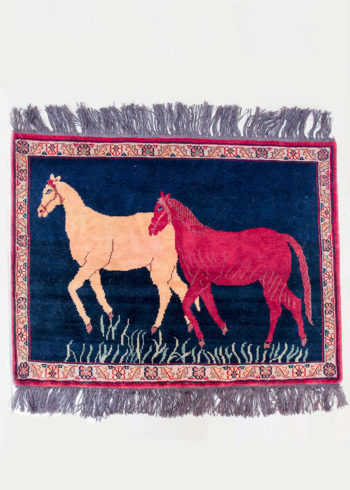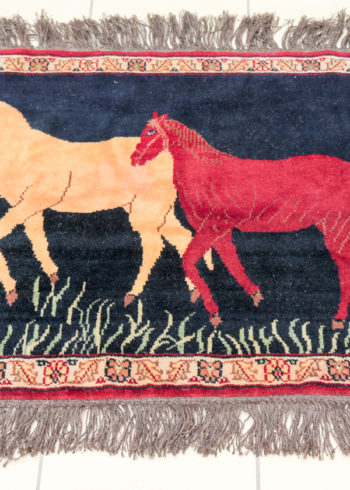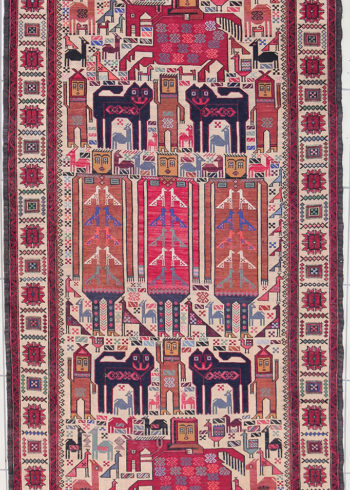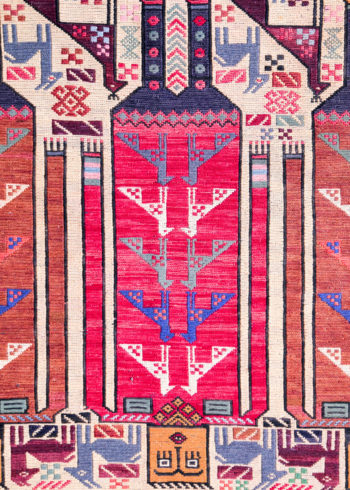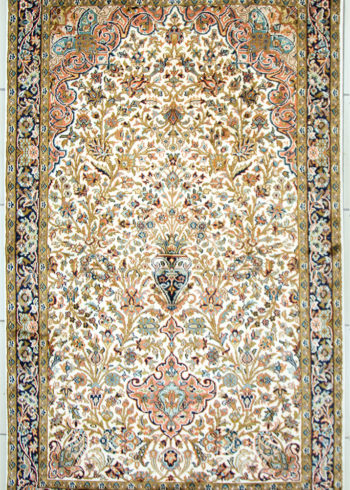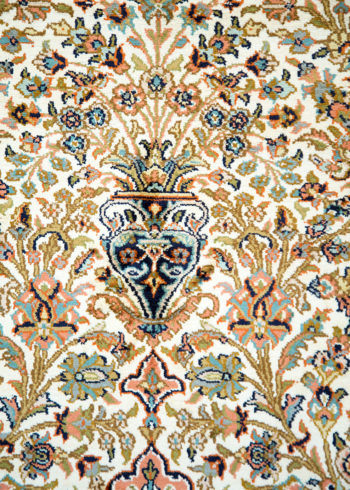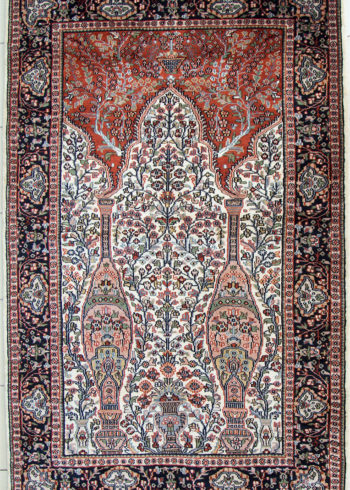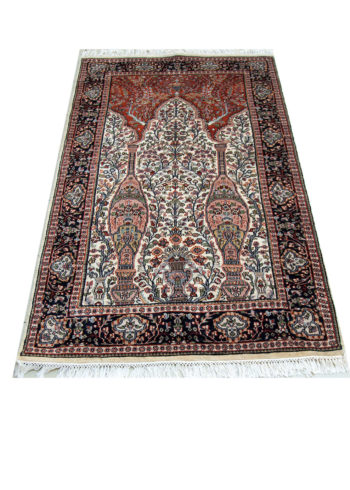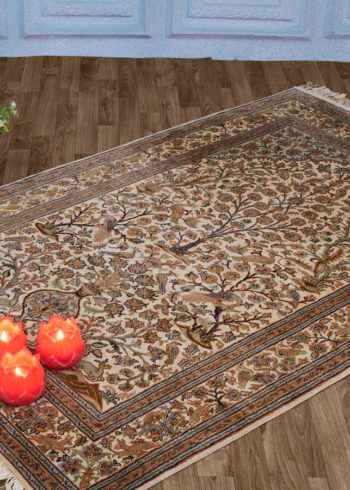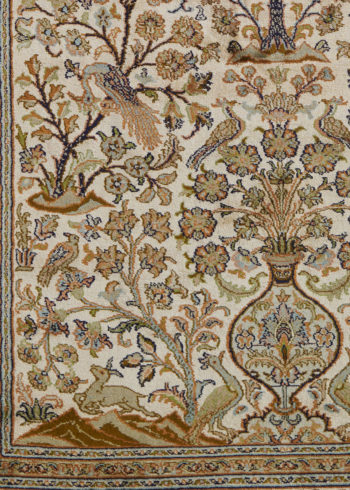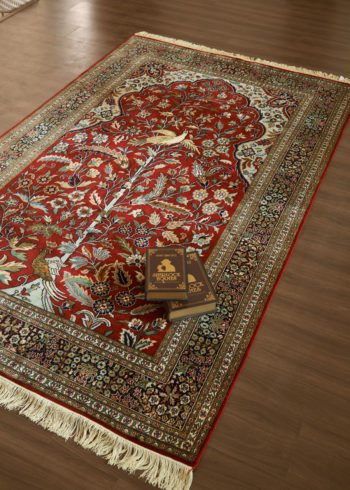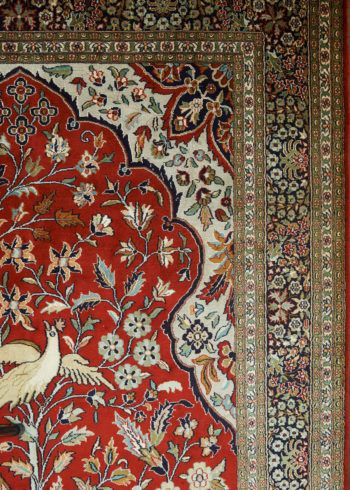Pictorial Rugs & Carpets
The wall hangings and pictorial rugs and carpets are an exclusive selection of carpets that have a set of inimitable motifs that are absolutely unusual and singular in all aspects of designing, color combination and visual appearance.
These carpet designs have a popular term for reference coined as “Garden” scenes or motifs set in gardens of palaces of yore.
These designs originated in Persia and are widely believed to be inspired from one of the paramount wonders of the ancient world – The Gardens of Babylon & The Palace of Persepolis.
The same inspiration has been modified in Indian context too, in the form of the famed Shalimar Garden (literally translated as – the Garden of Paradise) situated in Srinagar, Kashmir that enthused artists to create the Shalimar Garden designs along with the original interpretations of other such motifs, like the Bakhtiari, Hamadan & Qum from Persia.
Unique Pictorial Rugs
Wool-Silk
Pure Silk
Pure Silk
Pure Silk
Pure Silk
Pure Silk
Pure Silk
Pure Silk
Hand-spun wool with Botanical Silk
Hand-Spun Highland Wool
Hand-spun wool with Botanical Silk
Pure Silk
Wool-Silk
Pure Silk
Pure Silk
Pure Silk
Pure Silk
Pure Silk
Pure Silk
Pure Silk
Pure Silk
Pure Silk
Pure Silk
Pure Silk
Pure Silk
Wool-Silk
Wool-Silk
Pure Wool
Pure Wool
Pure Wool
Pure Wool
Pure Silk
Wool-Silk
Pure Silk
Pure Silk
The pictorial rugs and carpets have been famous from times immemorial!
The unique designs of the pictorial rugs and carpets is so enticing that we generally refrain from stepping on it!
The ancient art of wall hanging of oriental carpets and rugs is not just alive but also thriving in the living rooms, bedrooms but never as coffee-tables rugs.
Some of the popular designs are:
- Flower vases
- Hunting
- Portrait of a lady
- Persian court
- Animals / Birds
- Scenery
- Statues
- Religious theme
Here is an interesting reading on Wikipedia with loads of information.
Are you looking for a specific design? We custom make the pictorial carpets as per your selection of design, size, colour scheme and material: pure silk, pure wool or silk-wool blend.
Shalimar Garden (Hamadan)
The Shalimar or the Garden-of-Paradise motif is a traditional Indo-Kashmiri design that is a distinct modification of the intricate and infinitesimal artistry of the original Hamadan (Persian) pattern and has a rather well-planned scheme of superb representation of the weaver’s flowering imagination that explains the symbolism that nature plays in mans life. This design is preferably used as a wall hanging as it is not a symmetrical motif and has pictorial motifs and one-sided patterns created on it.
Harmonizing the renowned Shalimar Bagh (Garden) in Srinagar; Jammu And Kashmir (India), with a work of art is a glowing tribute to the elements of the nature. The different windows of this Hamadan design represents the various entrances or the gateways to this garden Shalimarï that literally translates to the Garden of Paradise in Kashmir.
The Shalimar was first built by the Mughal Emperor Jahangir for his wife Noor Jahan in 1619. The Shalimar is considered the highest point of Mughal horticulture, even today. While the recent history and development of the Mughal types of gardens is credited to Emperor Jahangir of the Mughal Dynasty, the ancient history of this garden that existed here can be traced even earlier to the 2nd century, when it was built during the reign of Pravarsena II.
Tree design
The tree is a time-honored motif in Oriental art; its fruit is a source of sustenance and its leaves give welcome shade. It also provides the weaver with a convenient way of filling the field with directional design. Tree and shrub designs are found in classical Indian and Persian rugs but their style is inspired more by contemporary miniature painting than by the archaic design found in Sassanian art, in which two animals are depicted nibbling at the lower branches of a tree. It was also an adopted tribal emblem and is found in nineteenth-century rugs by the Ersari, Baluch and the Qashqai.
Vase motif
An overflowing vase was the attribute of the Sumerian water Goddess during the third millennium. Although it has long lost its original religious significance, the vase continues as a recurring motif in Oriental art right down to the present day.One of the most attractive types of classical rug is the Persian Vase group in which one or more vases serve as a pretext for the floral arrangement to extend over the field, either in the form of scrolling arabesques or in a lattice arrangement. Tree-of-life and vase motif rugs were made in Persian centers such as Kashan, Tabrez and Mashad and are today being produced in our workshops in Kashmir with impressive results.
In addition to pictorial oriental carpets and rugs, we have a vast range of wool and cotton durries.
A Brief History »
Hand-knotted pictorial rugs and carpets have a rich history that dates back thousands of years, with origins in ancient Persia (modern-day: Iran, Egypt, Turkey, and parts of Afghanistan and Pakistan) and surrounding regions.
These rugs are renowned for their intricate designs and detailed craftsmanship, often depicting scenes from nature, mythology, and daily life.
The art of hand-knotting rugs involves tying individual knots of wool, silk, or other fibers onto a foundation of warp and weft threads, a meticulous process that can take months or even years to complete.
This labor-intensive method results in durable, high-quality carpets that are treasured for their beauty and cultural significance.
Explore our article on knots done for our handmade hand-knotted rugs.
The tradition of creating pictorial rugs flourished during the Persian Empire, particularly under the Safavid dynasty in the 16th and 17th centuries.
This period saw the establishment of royal workshops where master weavers produced carpets for palaces and important patrons.
The designs often included elaborate floral patterns, hunting scenes, and depictions of historical events, influenced by Persian miniatures and manuscripts.
These carpets not only served as luxurious floor coverings but also as storytelling mediums, preserving cultural heritage and artistic expression through their intricate motifs.
Over time, the art of hand-knotted pictorial rugs spread beyond Persia to other parts of Asia, including India, Turkey, and China, each region developing its unique styles and techniques.
In India, for instance, the Mughal emperors fostered the creation of exquisite rugs that blended Persian aesthetics with local artistic traditions.
Turkish carpets, known for their bold geometric designs and vibrant colors, also became highly prized.
Today, hand-knotted pictorial rugs continue to be produced, valued not only as functional items but also as works of art that reflect the history, culture, and craftsmanship of their makers.





